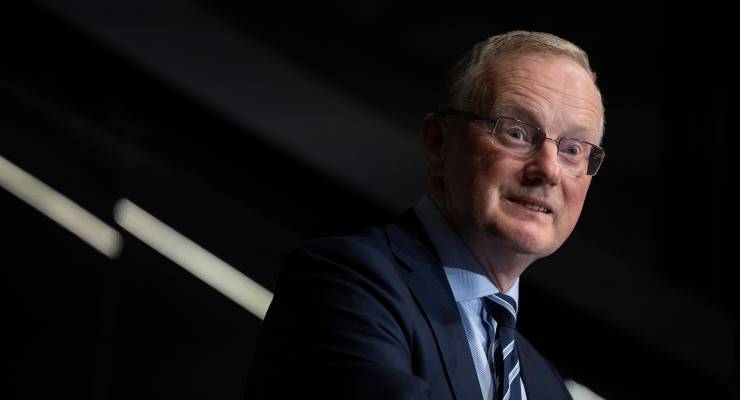
Bad news on inflation: our downward trend just disappeared, hinting that the end of inflation will be slower and more fitful than we had hoped, and the price of fighting it will be higher.
The Australian Bureau of Statistics’ (ABS) monthly inflation indicator came in at 6.8% for April, after recording 6.3% in March. That’s a bounce inflation-watchers weren’t expecting, and has poured cold water on some of the optimism that had begun to infect the economic outlook.
The higher inflation rate sent the sharemarket reeling, falling nearly 2% on Wednesday when the data was released. Investors had to accept that interest rates might be higher for longer than they had hoped, with negative effects on the economy.
As the next chart shows, inflation hasn’t returned to its highs, but anyone hoping for a smooth, steady fall will be disappointed. US inflation is already down to 5%, after topping out at 9.1%, and some observers forecasted a similar trajectory for Australia. But our downward trajectory will be slower, it appears.
For now, some of the unexpected upward momentum in prices is coming from volatile items, including holiday travel. When those are excluded, the series is less bouncy. Indeed, the details give us some optimism.
Among the items showing a big annual rise is fuel. That’s an important one to pay attention to, because in April 2022 then-treasurer Josh Frydenberg cut petrol taxes, meaning that the price rise seen in petrol is partly an artefact. The 2023 price includes an extra 22 cents a litre in taxes that the 2022 price does not. So fuel inflation is not so much a sign of a hot economy as of policy interventions.
Fuel is one of the most watched prices in the economy. Few other commodities advertise their price on giant screens at the front of the shop! Generally speaking, fuel prices have fallen in recent months, with the huge premium for diesel fuel over petrol disappearing.
That will help inflation to fall, as will the fact global oil prices are falling. Nevertheless, at time of writing, the regular pulsation in the retail fuel price cycle seems to be sending pump prices over $2 a litre in some places. Waiting for that cycle to end before refuelling could be worthwhile if you can.
The other thing that’s rising now, and will continue to rise, is rents.
Their upward trajectory is like a malevolent force that we appear powerless to stop. With vacancies at record lows, new building scarce and migration strong, it is unlikely rent inflation is finished. RBA governor Philip Lowe has been widely mocked for saying people need to take on more housemates …
… but he’s not wrong. One way the market manages to fit more people into the same amount of homes is by reducing what they call new household formation. Kids live with their parents longer, couples don’t divorce, share house residents endure each other longer, etc. (Another useful way would be reshuffling the housing stock so young families, rather than empty-nesters, have the houses with spare bedrooms. Recent moves in NSW to cut stamp duty and make moving house less costly will be helpful in that regard.)
Still, these are long-term solutions, and for now, people are struggling with a lot of things that cost far more than a year ago.
The feeling that you’re sliding backwards — that you can’t afford what you could before — is real and very unpleasant. And the latest data confirms that the feeling could last longer than we previously thought.








Again the arguement of a wage/price spiral promoted by Chalmers, the RBA, big business et al is BS. Price hikes have everything to do with profit taking meanwhile wages remain stagnant. So much for a Labor Party!
The RBA will not stop raising rates and will create at the very least stagflation getting worse if not bringing on a major recession. Wages meanwhile have no hope of increasing while workers are trapped in a spiral of increasing debt, inflation pressures and having no negotiating power with bosses. Governor Lowe makes the circumstances for workers worse by telling government and business that wages must not increase unless productivity rises – all the while knowing that full-time reasonably well paid jobs are disappearing. The “new” economy of AI and service industries is low-paid part-time jobs and the gig market where output is immeasurable……
Correct. The RBA in its wisdom thinks that the way to control business driven inflation is to rip more money out of mortgage holders and renters, with many going bankrupt or losing in heir homes, rather than directing attention to the wealthy who, increasingly, a major part of the problem.